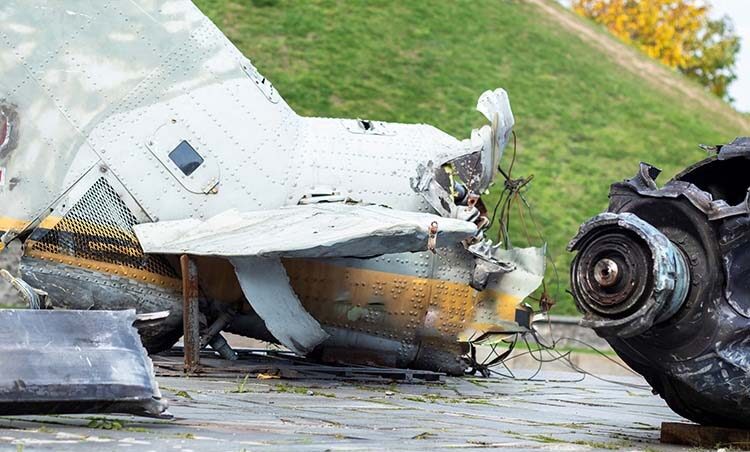Aerial Anomalies Exposed: 10 Root Causes of Chopper Crashes
<p>Following the tragic demise of Iran’s President Ibrahim Raisi and foreign minister aboard a Bell 212 helicopter in the rugged northwest terrain near the Azerbaijan border on Sunday, apprehensions regarding the safety of helicopter travel have surged. Once again, passengers have expressed concerns regarding the intricacies and perils associated with these rotary-wing aircraft. Despite advancements […]</p>

Aerial Anomalies Exposed: 10 Root Causes of Chopper Crashes
Following the tragic demise of Iran’s President Ibrahim Raisi and foreign minister aboard a Bell 212 helicopter in the rugged northwest terrain near the Azerbaijan border on Sunday, apprehensions regarding the safety of helicopter travel have surged.
Once again, passengers have expressed concerns regarding the intricacies and perils associated with these rotary-wing aircraft. Despite advancements in helicopter safety standards over time, the inherent risks and hazards during flights remain pervasive.
It is imperative to underscore the importance of vigilance, as helicopters exhibit a 35 percent higher propensity for accidents compared to airplanes. Statistical data reveals a crash rate of 9.84 incidents per 100,000 flight hours for helicopters, contrasted with 7.26 percent for fixed-wing aircraft.
Helicopters boast unique design features, negating the necessity for traditional runways for takeoff and landing. Their vertical takeoff and landing capabilities, along with the ability to hover for extended periods and operate at low altitudes, signify their versatility.
However, it is crucial to acknowledge that these advantages can swiftly transform into liabilities in adverse scenarios. Leveraging these specialized functionalities, helicopters can access remote areas inaccessible to conventional airplanes and conduct close-range aerial reconnaissance.
With a multitude of dynamic components, helicopters represent highly intricate machines, necessitating regular and meticulous maintenance. Proficiency in piloting skills and maneuvering is paramount. The following are key contributing factors to helicopter accidents:
- Human fallibility: Errors committed by pilots, air traffic controllers (ATCs), and maintenance personnel constitute common occurrences in helicopter mishaps. Unlike their fixed-wing counterparts, helicopter pilots must maintain continuous manual control, lacking the luxury of autopilot systems.
Moreover, pilots contend with cognitive overload, processing extensive information, leading to fatigue and compromised decision-making. In some instances, pilots may attempt landings in hazardous conditions, disregarding surrounding obstacles, culminating in catastrophic outcomes.
- Air Traffic Control: In addition to human errors, proficient Air Traffic Controllers (ATCs) may occasionally err, albeit infrequently. Encounters with helicopters in airport vicinity zones can precipitate chaotic situations.
- Oversight mishaps: Oversight personnel may inadvertently leave tools aboard helicopters, posing hazards to passengers. Consequently, post-repair inspections by pilots are imperative to mitigate risks.
- Technical malfunctions: Malfunctions or failures in critical helicopter components such as main rotors, tail rotors, rotor shafts, gearboxes, or power transmission systems can precipitate accidents.
- Main rotor control loss: Compromised integrity of the primary rotor assembly can result in loss of rotational control, leading to aircraft instability.
- Tail rotor impairments: Tail rotors play a pivotal role in stabilizing helicopters; hence, malfunctions in this component impede pilot control.
- Component or system breakdown: Sudden component failures can have dire consequences, such as gearbox failures precipitating catastrophic events.
- Engine malfunctions: Engine failures pose grave risks to helicopters; however, skilled pilots can avert disasters through adept maneuvering. In the event of single-engine failure, pilots execute autorotation maneuvers for controlled descent and safe landings. Dual-engine helicopters afford greater maneuvering capabilities, facilitating controlled flight on a single engine.
- Fuel-related issues: Fuel depletion or overfilling can compromise flight safety, necessitating prompt detection and corrective measures.
- Environmental hazards: Helicopters operating at low altitudes are susceptible to adverse weather conditions and bird strikes, heightening accident risks. Poor visibility conditions induced by snow, rainfall, or strong winds pose substantial challenges to helicopter operations, underscoring the importance of weather monitoring.
Helicopters serve diverse roles in airlift, rescue missions, medical evacuation, surveillance, firefighting, and military operations, thereby accentuating the imperative of safeguarding these aerial assets.








